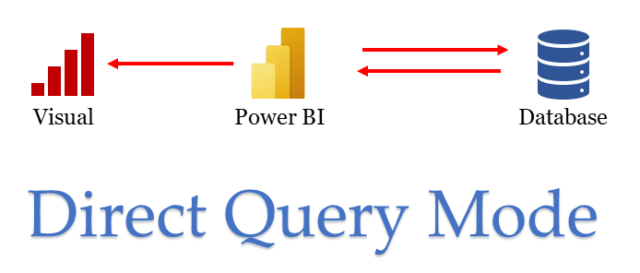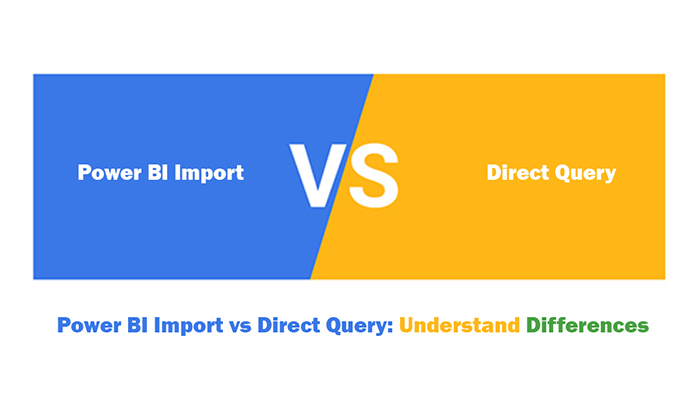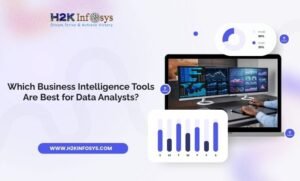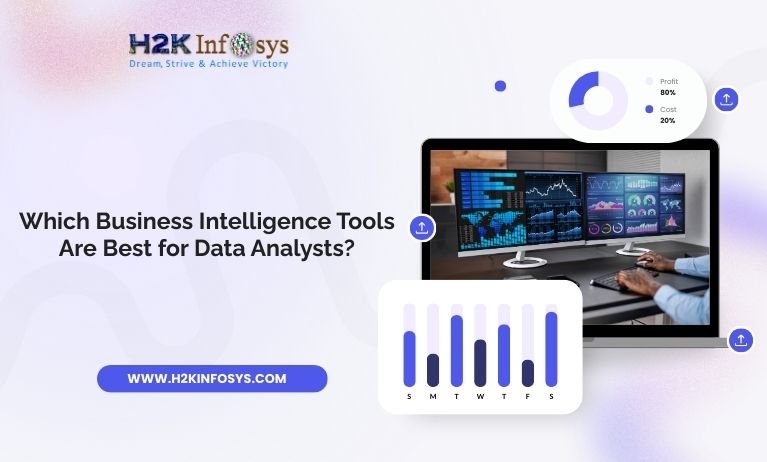Introduction
Imagine this you’ve built an amazing Power BI dashboard. It looks great, the charts are visually appealing, and everything seems on point. But as soon as your data refreshes, the report slows down, and users start noticing performance issues. Why? One core decision could be the culprit: your choice between Direct Query vs Import Data.
In the world of Power BI, understanding the difference between Direct Query and Import Data isn’t just a technical detail it’s a strategic choice. It can impact performance, data freshness, report complexity, and ultimately, user experience.
In this blog, we’ll dive deep into what sets these two options apart, when to use them, and how to align your choice with business needs. Whether you’re just starting with a Power BI crash course or taking advanced steps in Power BI server training, this guide will provide hands-on insights and real-world use cases.
What Is Direct Query in Power BI?
Direct Query is a method in Power BI where data remains in the original source (like SQL Server or Oracle), and Power BI queries it in real-time. It does not store data within the PBIX file.

Key Features:
- Real-time access to data
- No scheduled refreshes needed
- Ideal for large datasets that can’t be stored in memory
- Supports row-level security in the source system
Example:
Imagine a manufacturing company with an SQL Server containing millions of records. Instead of importing that data, the Power BI report uses Direct Query to fetch only the needed records during runtime.
What Is Import Data in Power BI?
Import Data mode copies data from the source into Power BI’s in-memory engine (VertiPaq). This makes interactions with visuals lightning-fast since everything is already pre-loaded.
Key Features:
- Fast performance due to in-memory compression
- Requires scheduled refreshes
- Great for aggregated or historical analysis
- Offline capability works even if the source is down
Example:
A sales team imports last year’s sales records to analyze seasonal trends without needing a live database connection.
Key Differences: Direct Query vs Import Data
| Feature | Direct Query | Import Data |
|---|---|---|
| Data Storage | No data stored in Power BI | Data is stored in PBIX |
| Performance | Depends on source database speed | Very fast, in-memory |
| Refresh | Real-time | Requires refresh schedule |
| Offline Use | Not available | Fully available |
| Data Volume | Ideal for large datasets | Limited by memory |
| Calculations | Limited | Full DAX capabilities |
| Complexity | More complex setup | Easier setup |
Understanding these differences is vital for selecting the right connectivity during your Power BI crash course or Power BI server training.
When Should You Use Import Data?
Import mode is generally recommended when:
- Your dataset is manageable in size (under 1GB for Pro users, more for Premium).
- You want high-speed reports and dashboards.
- Real-time updates are not critical.
- You’re dealing with static historical data.
Real-World Example:
A retail company uses Import mode to analyze sales trends over the last 3 years. Since the data doesn’t change frequently, importing is more efficient.
When Should You Use Direct Query?
Direct Query is your go-to when:
- You need up-to-date, real-time data.
- Your datasets are too large to import.
- Business logic is managed within the database.
- You require row-level security handled by the source.
Real-World Example:
A financial firm uses Direct Query to access live transaction data, ensuring traders always see the latest numbers.
Real-World Use Cases & Scenarios
Use Case 1: Healthcare Dashboard
- Direct Query to access up-to-the-minute patient records
- Secure access using SQL Server row-level permissions
Use Case 2: Monthly Sales Reports
- Import Mode for aggregated historical sales
- Refresh scheduled nightly
Use Case 3: Real-Time Manufacturing Metrics
- Direct Query connected to a factory sensor database
- Instant reaction to machine errors or temperature alerts
Understanding these real-world situations helps bridge theory with hands-on learning, especially when exploring the differences between Direct Query vs Import Data in a Power BI crash course environment. By working through practical use cases, learners can clearly see how Direct Query vs Import Data affects performance, data freshness, and scalability.
These scenarios also highlight the strengths and limitations of each mode Direct Query excels in real-time analytics, while Import mode provides superior performance for historical reporting. Engaging with hands-on projects reinforces how to choose wisely between Direct Query vs Import Data based on business requirements, empowering learners to build efficient and responsive dashboards.
Performance Considerations
Direct Query Performance Tips:
- Use filters to limit query size.
- Avoid complex DAX; push logic to the database.
- Use optimized views or stored procedures.
Import Mode Performance Tips:
- Remove unused columns.
- Aggregate data at the source.
- Schedule refreshes during off-peak hours.
Pro Tip: Use the Performance Analyzer in Power BI to identify slow visuals or queries.
Security and Governance Factors
Security is critical, especially when handling sensitive or regulated data.
Direct Query:
- Leverages source-level permissions.
- Ensures row-level security is consistent with corporate governance.
Import Mode:
- Data is cached; any changes in source permissions won’t reflect until the next refresh.
- Requires Power BI row-level security configuration.
If you’re managing enterprise-level deployments through Power BI server training, this section is essential.
Tips for Optimizing Both Modes
When evaluating Direct Query vs Import Data, optimization is key to ensuring performance and usability. For Direct Query vs Import Data, start by using selective filters to reduce query loads. Push complex transformations back to the database when using Direct Query. For Import mode, remove unnecessary columns and aggregate data before loading. Use composite models to combine both methods effectively. Monitor performance with built-in tools like Power BI Performance Analyzer. Remember, the choice between Direct Query vs Import Data impacts scalability and responsiveness, so test your setup thoroughly. The right optimization strategy enhances your dashboard’s effectiveness and user experience.
Hybrid Approach:
Combine both modes using composite models. For example, import historical data and use Direct Query for current data.
Model Design:
Use star schema designs to simplify relationships and boost performance.
Monitoring Tools:
Use Power BI Service and SQL Profiler to monitor performance and usage metrics.
Gateway Configuration:
Ensure on-premise gateways are optimized and updated.
Direct Query vs Import: Summary Table

| Category | Best Option |
|---|---|
| Real-Time Insights | Direct Query |
| High Performance | Import |
| Large Datasets | Direct Query |
| Offline Analysis | Import |
| Simplified DAX | Import |
| Source Security | Direct Query |
| Mixed Scenarios | Composite Models |
Conclusion
Understanding the pros and cons of Direct Query vs Import Data in Power BI is crucial for designing efficient, scalable, and secure data models. Each method has its place, depending on your business needs, data strategy, and performance requirements.
By integrating these principles into your learning, whether through a Power BI crash course or Power BI server training, you’ll gain a sharper edge in report development and enterprise analytics.
Ready to master Power BI with hands-on learning?
Enroll in H2K Infosys’ Power BI training to become job-ready with real-world skills and industry projects.
























